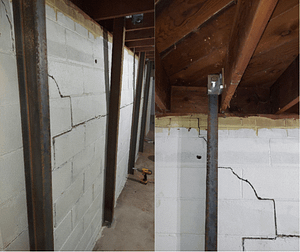The 7-Minute Rule for Best Basement Waterproofing
The 7-Minute Rule for Best Basement Waterproofing
Blog Article
Not known Details About Best Basement Waterproofing
Table of ContentsThe Ultimate Guide To Best Basement WaterproofingThe Facts About Best Basement Waterproofing RevealedThe Best Strategy To Use For Best Basement WaterproofingThe Best Basement Waterproofing Ideas
What triggers water damages problems in your basement? Pipelines that line the inside of your walls are simply one example of where water damages can occur.The dirt and ground of your home is extremely essential. If there is excessive water surrounding your home, nonetheless, it can push the dirt into your home and create the seals of your basement to end up being endangered. when you see excess water in locations where it must not be, that is an extremely good indicator that you have a problem.
Concrete waterproofing finishings are cement-like; once completely dry, they stick permanently to concrete and stonework wall surfaces. You use the finish with a hefty brush made with bristles swirled during application for an appealing, completed look. Concrete water resistant coverings can't be applied to previously painted surfaces Silicate-based concrete sealers, also recognized as densifiers, are also suitable just for walls that haven't been painted or sealed.
Some Ideas on Best Basement Waterproofing You Need To Know
Due to the fact that these are penetrating sealers, they can not exfoliate or peel, and you can have paint used over them. The American Eagle group may uncover a lot more complex causes for your dampness concerns; there are extra services readily available. Plastic sheets and panels may be integrated with interior basement drainage systems. They don't quit water from making it through the wall surface, but they do quit it from destroying points in the cellar.
A sump pump is required to relocate water out of your basement. Here are a few points the professionals can set up to help the waterproofing process: this is created for the wall surfaces of your basement.
It additionally helps avoid the growth of mold - Best Basement Waterproofing or mildew, which can be a pretty big carcinogen. Basement waterproofing is a great method to prosper of prospective water damage that may come your way. Do not wait to speak to neighborhood specialists, like those at American Eagle with any waterproofing inquiries you might have regarding what cellar waterproofing appears like and a lot more.
What Does Best Basement Waterproofing Mean?
When it pertains to shielding your home, among one of the most vital actions you can take is cellar waterproofing. A completely dry basement not just ensures a secure and healthy and balanced atmosphere for you and your family members, yet it likewise helps to avoid costly water damages and mold and mildew development. In this post, we will review the relevance of cellar waterproofing, the benefits it supplies, and how you can go about protecting your space.
When it pertains to cellar waterproofing, there Related Site are numerous methods that can be used to maintain water out of your room. These include indoor sealers, exterior waterproofing membrane layers, and drainage systems. The most effective method for your cellar will rely on elements such as the degree of water intrusion, the condition of your structure, and your spending plan.
Finally, cellar waterproofing is a vital action in protecting your home from water damage, mold growth, and various other issues. By spending in navigate here basement waterproofing, you can make sure that your area continues to be dry, risk-free, and healthy and balanced for you and your family members. Not only does cellar waterproofing offer tranquility of mind and defense for your home, yet it can also enhance its value and conserve you cash on power expenses in the lengthy run.
About Best Basement Waterproofing
Inside sealants are a sort of basement waterproofing technique that includes applying a sealer to the within of the cellar wall surfaces and floors. Water can permeate right into a cellar with fractures, gaps, or permeable concrete, particularly in areas where there is high groundwater or poor drainage. This can cause water damage and mildew growth, as well as damages to the foundation and architectural stability of the structure.

It is an effective service for preventing water damages and preserving the structural integrity of the structure. It can be costly and turbulent to set up, as it requires excavation around the structure and might entail landscape design and various other repair work once the waterproofing is full. However, this technique is one of the most reputable and lasting service for stopping water seepage in the cellar.
Foundation fracture injections are a technique of fixing splits in the structure wall surfaces from the inside, without excavating the soil around the foundation. The process involves injecting a fluid polyurethane or epoxy into the splits, which then solidifies and creates a waterproof barrier that avoids water from seeping via. This approach is usually made use of for smaller cracks that do not posture an architectural risk, and can be finished quickly and with marginal interruption to the building's passengers.
Report this page